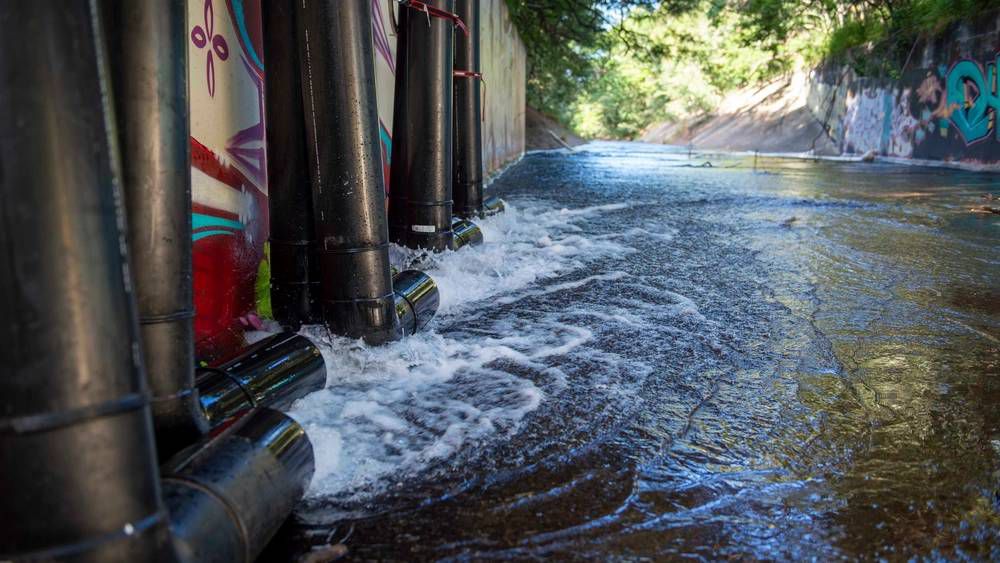HONOLULU — Tests of drinking water taken during the Navy’s flushing process showed a chemical most often used in pesticides that is considered by the EPA to be a probable human carcinogen.
The Interagency Drinking Water System Team, which consists of the Hawaii Department of Health, U.S. Environmental Protection Agency, the U.S. Army and the U.S. Navy, is investigating after drinking water samples from eight zones detected bis(2-chloroethyl)ether, also known as BCEE.
The Interagency Drinking Water System Team has ordered more samples be collected and tested from the eight zones, according to a statement from the Navy sent to Spectrum News Hawaii. It is not clear what the source of the chemical is or when it appeared in the water.
“At the beginning of this response, there was limited information,” the EPA and Hawaii DOH said in a joint response sent to Spectrum News Hawaii. “Out of an abundance of caution, the Interagency Drinking Water System Team (IDWST) asked the Navy to look for a wide range of chemicals at low screening levels.”
BCEE is used in pesticides, cleaners, rust inhibitors, paints, varnishes, and it can be found as an additive in petroleum products. The Navy said in its statement that BCEE was not found in fuel samples taken from the Navy’s Red Hill Shaft or from samples of the source water at Waiawa Shaft.
There is limited knowledge about the health effects of the chemical, according to the EPA and DOH. The EPA lists online that inhalation to BCEE causes extreme irritation of the respiratory tract and skin, and that it has been shown to be carcinogenic in animal studies, increasing liver tumors in mice. BCEE is classified by the EPA as a “probable human carcinogen.” Carcinogens have the capacity to cause cancer in humans.
BCEE dissolves easily in water and has a strong odor. It is not regulated under the U.S. Environmental Protection Agency’s Safe Drinking Water Act, so there are no legal limits on the amount allowed in drinking water.
“The Hawaii Department of Health is working with national experts from the Centers for Disease Control and Prevention’s Agency for Toxic Substances and Disease Registry to learn more about this chemical, understand the detections reported, and determine next steps,” the EPA and Hawaii DOH joint statement said.
The U.S. Navy is currently following a plan created by the Interagency Drinking Water System Team to flush the water system that has been contaminated with fuel from the Red Hill storage tanks. The process first flushes the water distribution system, followed by a flushing of individual homes and businesses.
The samples that tested positive for BCEE were taken from the water distribution systems at Iroquois Point, Catlin Park, Maloelap, Doris Miller, Halsey Terrace, Radford Terrace, Sub Base, Hale Alii, Marine Barracks, Hospital Point, McGrew, Halawa and Aliamanu Military Reservation.
The Department of Health issued an advisory in November to avoid drinking, cooking or brushing teeth with the Navy’s water. The DOH will look at completed flushing water samples in order to consider whether it will revise the advisory.
The Navy is posting the results of the water samples, including the eight with BCEE, on its new website.
Last week, the Navy filed an appeal in state and federal court to the Department of Health’s order saying it must drain the Red Hill fuel tanks. The Board of Water Supply and Department of Health criticized the U.S. Navy’s decision to appeal the Department of Health emergency.
The emergency order came after fuel leaked from the Red Hill Storage Facilities in November and May 2021, and it was also confirmed that petroleum levels within the Navy’s Red Hill Shaft were much higher than safe levels. In late January, test results also showed that the groundwater around the Red Hill Bulk Fuel Storage Facility is contaminated with oil.



